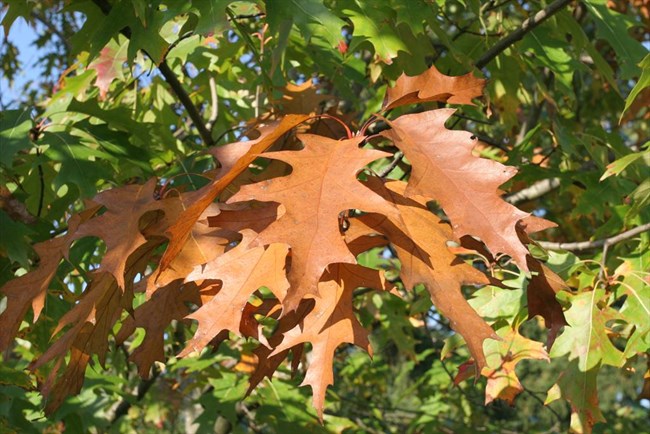Last updated: March 25, 2021
Article
From Experiment to Ornament: Northern Red Oak at Marblemount Ranger Station

(NPS/North Cascades National Park, 2019)
The presence of a solitary northern red oak tree in a ranger station may seem unremarkable at first glance, but this tree has a unique role in conveying the history of a place and has special value to the community. As a non-native in a largely native forest area of the Pacific Northwest United States, the tree is curiously out of place. Its presence reminds us of the origins of the place as a US Forest Service—rather than a National Park Service—ranger station, where different traditions influenced the design of the landscape.

(NPS/North Cascades National Park 11266, no date)
A US Forest Service Landscape
The tree was planted between 1915 and 1943, when Thomas “Tommy” Thompson ran the ranger station and, as the District Ranger for the USFS Skagit District, had an outsized influence on the lives of workers and residents of the region. Thompson ran the operations of the Skagit District of the Mt. Baker National Forest, a vast mountainous area encompassing the Skagit Valley and much of the North Cascades Mountains in northern Washington State. He was responsible for bringing electricity, telephone service, potable water, and roads to the community, as well as the primary source of jobs for the region.
The northern red oak was planted in an open space of turf in the center of the ranger station, clearly to grace the space with a tall, specimen tree. Its provenance as a non-native species ties to two areas of history, one, to a period of USFS experimentation with non-native trees for timber production in the Pacific Northwest, and the other, to the tradition of the USFS planting non-native vegetation within ranger stations. Distinct from the NPS tradition of using native plants to harmonize developed areas within national parks, USFS ranger stations were often located outside of national forest boundaries, within communities, where they adopted a more domesticated style, including ornamental and edible plantings and specimen trees.

(NPS/North Cascades National Park, 2019)
NPS Inheritance
The ranger station continued to grow and serve as an anchor of community life for the region until 1968, when the North Cascades National Park was created, and ownership transferred to the National Park Service. By this time a mature specimen, the oak continued to grace the central open space of the ranger station as the park service developed the perimeter, preserving the open area at the core. Just as the USFS had used the central space for recreational activities and events, the NPS continued the tradition of gathering together in the shade of the oak. Named the “Council Oak” by the NPS and possibly by the USFS before, the tree is still celebrated as the anchor for all outdoor gatherings. Every year, seasonal employee orientations, staff meetings, training events and potlucks occur around the tree, the now-vast canopy providing welcome shelter from the summer heat and a colorful display in autumn.

(WSU Extension Photo)
Stewardship
In 1999, the tree was recognized as a historic feature of the ranger station, when the Marblemount Ranger Station was identified as a historic district eligible for listing in the National Register of Historic Places.
The tree receives minimal maintenance, other than mowing within the root zone, which helps to reduce competition for soil water and nutrients. While the tree could be expected to suffer from annual root compaction and lack of water in the summer months, in this environment, the tree has thrived and remains in good condition. The species is tap-rooted, able to sink deep roots down into the water table, which remains adequate despite summer drought. Glacier-fed rivers and creeks within the watershed supply summer groundwater, and the icy cold winters heave the soil, breaking up ground compaction. Naturally high biomass production in the Pacific Northwest furnishes soil plentiful in organic matter, providing nutrients for the tree as it reaches full maturity. The northern red oak has natural longevity, and barring unforeseen impacts, can be expected to distinguish the landscape for another century.
While the USFS abandoned its experimentation with non-native timber trees for ecological reasons, the northern red oak was, in fact, a durable species for this environment.
Discover More
Learn about the Marblemount Ranger Station Historic District
